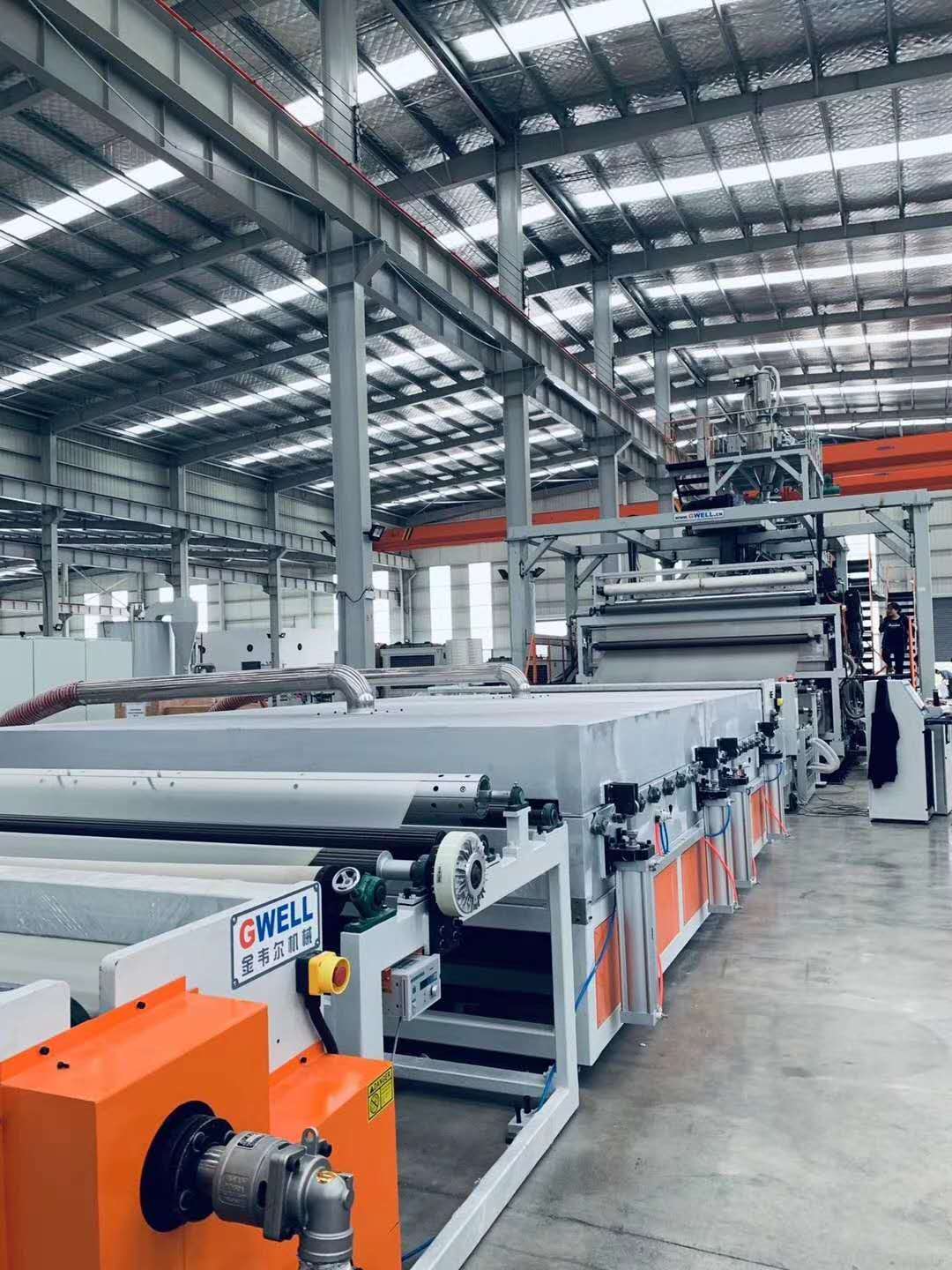This production line uses PE breathable rubber particles as raw materials and adopts extrusion casting method to melt and extrude PE modified breathable particles containing inorganic fillers. The mold is formed and the roller is stretched at high magnification to produce a breathable film with sub nanometer level micropores.
Process flow of PE breathable film
From the perspective of processing technology, there are mainly two ways to process breathable films: flat film casting method and blown film method. The casting method is widely used in China, Asia, Europe and America.
The main process flow of the casting method is as follows: PE raw material+pore forming agent - mixed metering - extrusion granulation - extrusion casting - stretching and shaping - cooling - trimming - coiling.
The stretching process has a significant impact on the film properties throughout the entire process. During the stretching process, when the binding force between the pore forming agent CaCO3 particles and the surrounding PE polymer is less than the deformation force of the PE polymer caused by stretching, the polymer separates along the edges of the CaCO3 particles, resulting in some small voids. The voids cannot allow liquid molecules to pass through, only gaseous molecules can pass through, making the stretched film waterproof and breathable. The size of the voids can be adjusted, depending on the size, shape, and stretching method of the CaCO3 particles. When the stretching temperature is at a certain value, the PE breathable film increases with the increase of the stretching ratio, the pore diameter increases, the breathability increases, and the stretching performance deteriorates; As the thickness increases, the breathability decreases.
Main technical parameters
|
Model
|
Product width(mm)
|
Product thickness(mm)
|
Weight g/㎡
|
Design extrusion output(kg/h)
|
|
GWS130
|
1600
|
0.005-0.3
|
15-50
|
500-600
|
|
GWS160
|
2200
|
0.005-0.3
|
15-50
|
600-700
|









